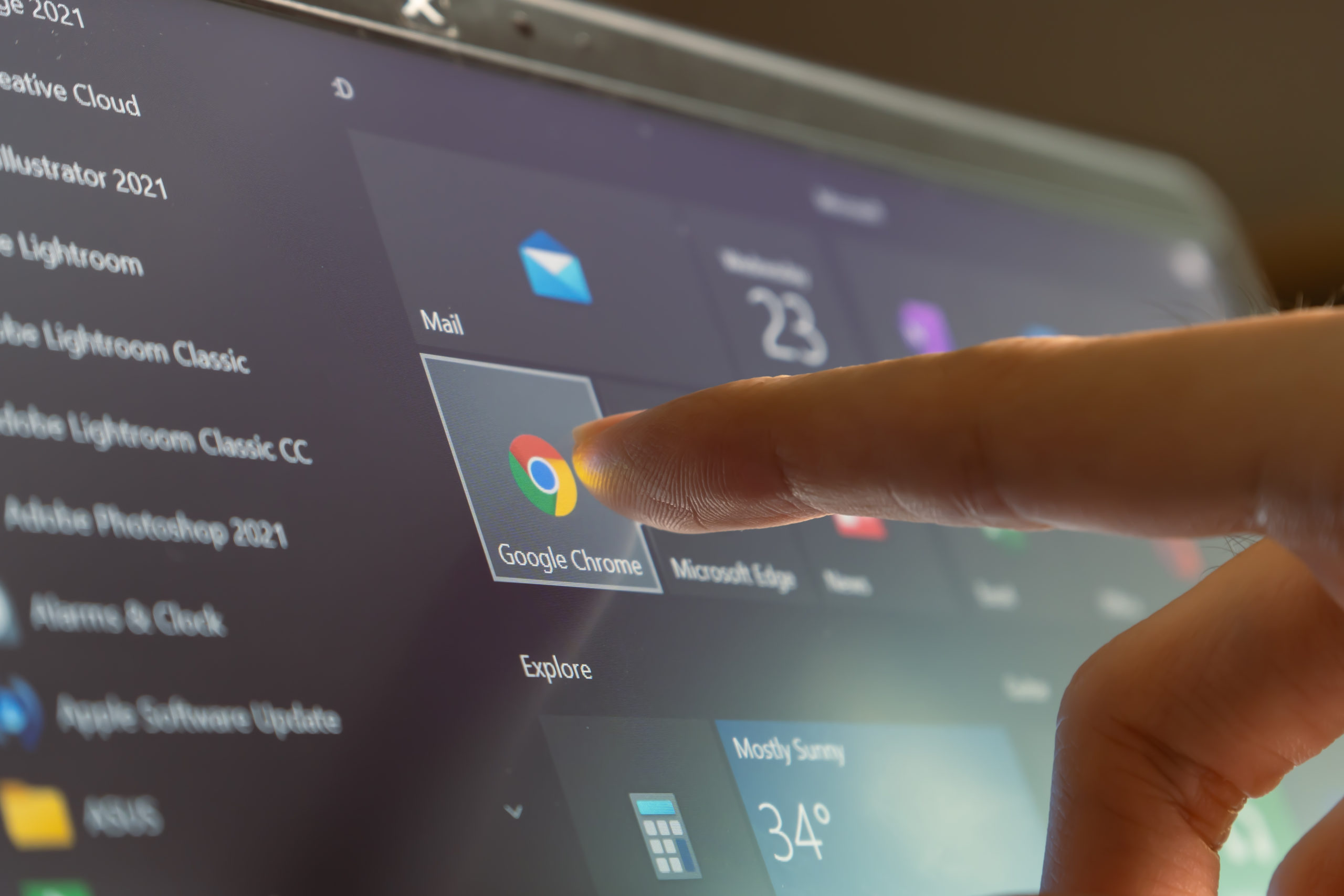Chrome OS: This Changes Everything

Traditional enterprise security has long been a game of trying to control endpoints. The problem with that, of course, is that endpoints are ultimately controlled by human beings who are, well, human. No matter how loyal or conscientious your users might be, they still might visit malicious websites, download unknown apps or block necessary software updates. Over time, their devices can become vast repositories of intellectual property, user credentials and personally identifiable information. Cybercriminals continue to become more and more sophisticated in their methods, and it’s clear that the traditional approach to IT management and security is no longer working. There has to be a better way.
Fortunately, there is.
With Chrome OS, your mission-critical data moves from your users’ endpoints to Chrome’s cloud-based architecture. Once your data is there, the loss or hacking of any device is much less likely to expose your company’s operations or financial systems to further attack. Chrome devices run with fewer pieces of software, thus reducing your overall vulnerability and management burden. And with Chrome OS, you no longer have to patch or update software on individual devices—your software can be deployed, updated and managed centrally.
Google Chrome completely re-engineers your endpoint security through multiple defenses at five different levels:
1. The device
With endpoints powered by Chrome OS and the Chrome browser, each user’s data and settings are encrypted by default, and that safeguard cannot be disabled by the user or anyone else. Chrome OS devices are available from industry leaders such as Acer, ASUS, Dell, Google, Lenovo and Samsung, all of which agree to meet or exceed Google’s specifications for quality, performance and security.
2. The firmware
Today’s cybercriminals typically achieve their aims through persistence—that is, by planting code or scripts on your organization’s endpoints. In so doing, they maintain a discreet long-term presence in your system, a presence that survives through reboots, changed credentials and system failures. With Google’s cloud-based architecture, typical attack surfaces such as installable drivers and scripts are no longer found on user devices.
But what if bad actors try to inject code into device-stored items such as the firmware, operating system or browser? Google responds with an approach called verified boot. When a Chrome OS device boots up, verified boot ensures that those pieces of Google software are authentic and unaltered. If any variation is detected, the reboot stops, and the attacker immediately loses control of the device.
3. The operating system
We’ve already seen how Chrome OS removes vulnerabilities from user endpoints. Chrome OS goes further by disarming attacks launched from compromised websites and cloud-based applications. Through process sandboxing, Chrome OS places strict boundaries between processes while they are executing. Process sandboxing limits how much communication can take place between applications, thus cutting off entry points for malicious code.
Beyond securing your network, Chrome OS simplifies operating system updates. Rather than frustrating users every time a patch or update is needed, Chrome OS allows the current operating system to continue serving the user while the updates load invisibly in the background. When the user reboots, the updated operating system launches in seconds.
4. The browser
The sandboxing concept found in Chrome OS also serves you in the Chrome browser. Every open tab in Chrome has its own sandbox, meaning that an attack in one tab is limited in its ability to spill over into neighboring tabs. Chrome also protects your users through Google’s Safe Browsing feature, which detects malicious sites and posts warning screens to alert would-be visitors. And Chrome makes it easy to set up two-factor authentication, with a range of options available for the second authentication method.
5. The applications
For decades, IT administrators have tried in vain to stop users from downloading unauthorized apps and the malicious code that often comes with them. Those efforts have usually failed because the roster of approved apps almost never matches the users’ wants and needs. Chrome OS solves the problem. The 2.5 million apps offered through the Chrome Web Store and the Google Play Store are pre-tested for security by Google. In addition, Google Play Protect continuously scans and verifies all these apps to provide ongoing mobile threat protection. Through Chrome OS, your organization can create a customized Google Play store to manage a list of approved apps for productivity, communication, collaboration and, at your discretion, entertainment.
Traditional endpoint security has typically viewed the user as the enterprise’s weakest link. Realistically, though, the greatest vulnerabilities lie in the traditional endpoints themselves. With their huge stores of sensitive data and outdated software, these devices create irresistible targets for cybercrime. Every credible enterprise needs a strategy for protecting its mission-critical systems. Through its five levels of support for security and IT management, Chrome OS moves your enterprise into the cloud and out of harm’s way.
Pythian is a Google Cloud Premier Partner and MSP, with services professionals trained and certified across multiple Google Cloud solutions. With deep expertise across Google Cloud, Google Workspace, Chrome OS and Chrome devices, Pythian is uniquely positioned to understand the benefits of a modern cloud architecture. As an authorized Chrome Enterprise partner in North America, our Google Chrome experts can help with all your requirements, from procuring the right device to implementation, administration, security and support services. Learn about our Chrome Jumpstart packages today, or schedule a free 30-minute consultation with one of our Chrome services professionals.
Share this
You May Also Like
These Related Stories

5 Tips for Keeping Your Remote Workforce Empowered and Secure

Protected Profiles: Chrome’s Secure Solution for Your Extended Workforce

No Comments Yet
Let us know what you think